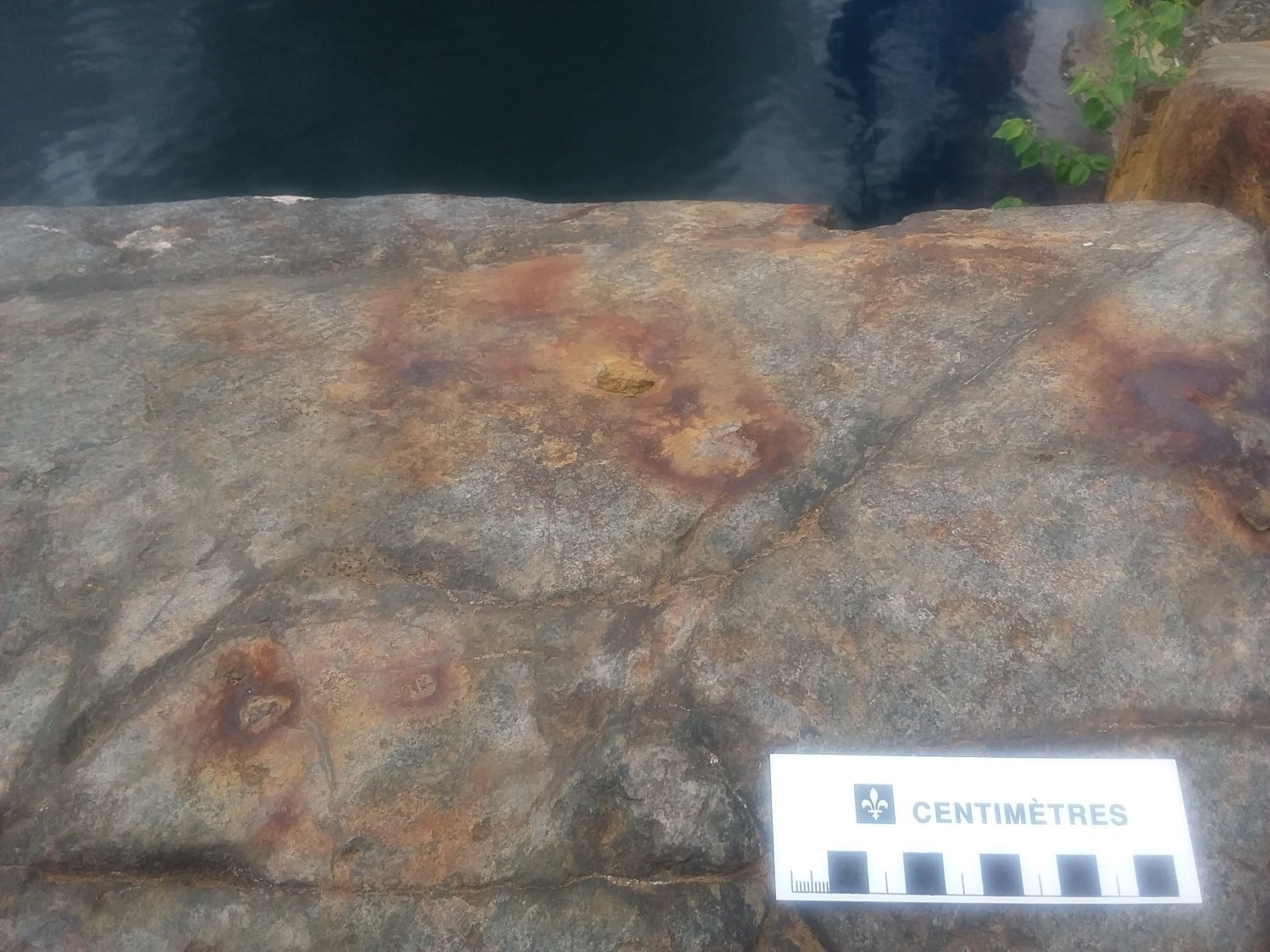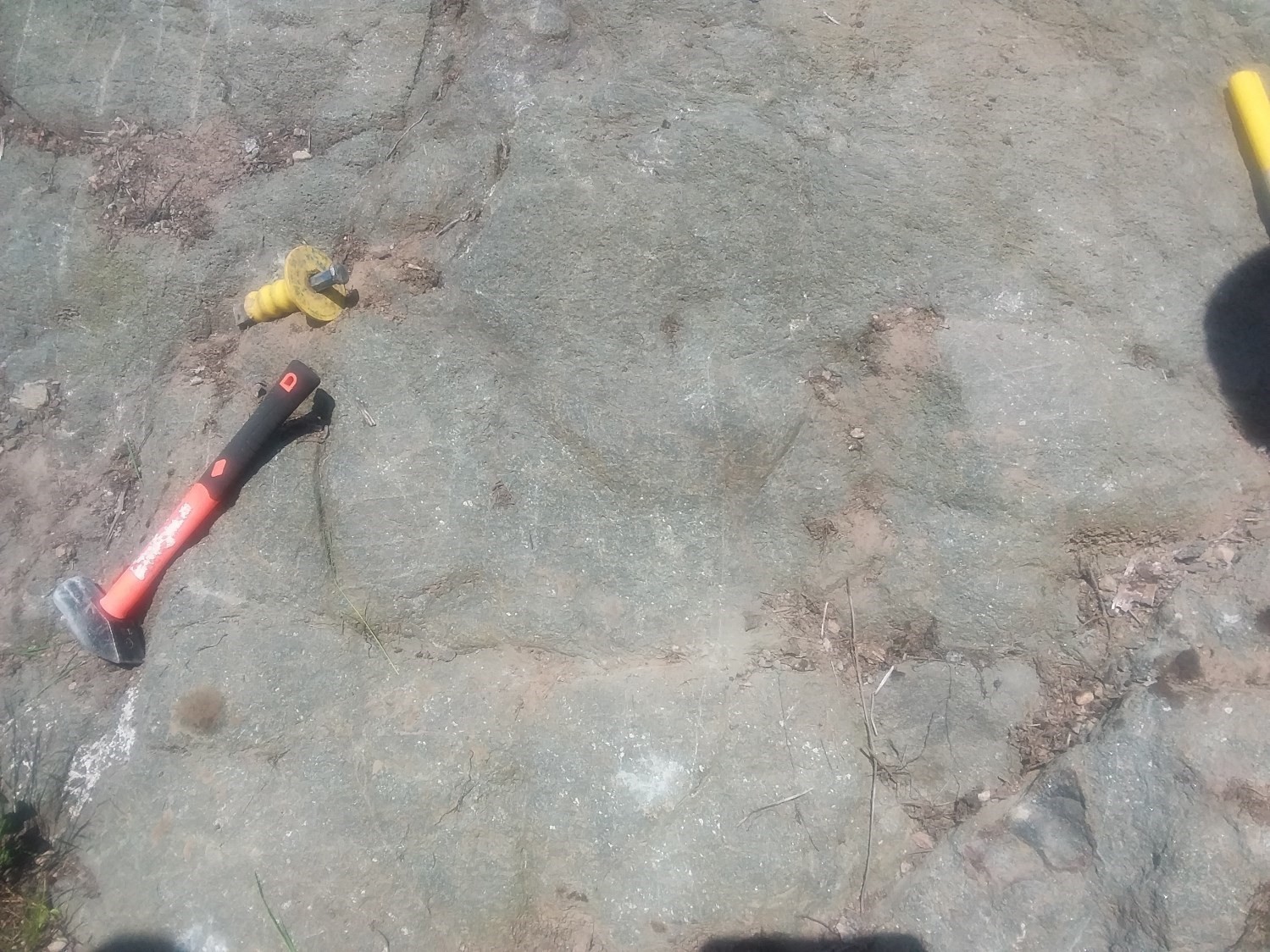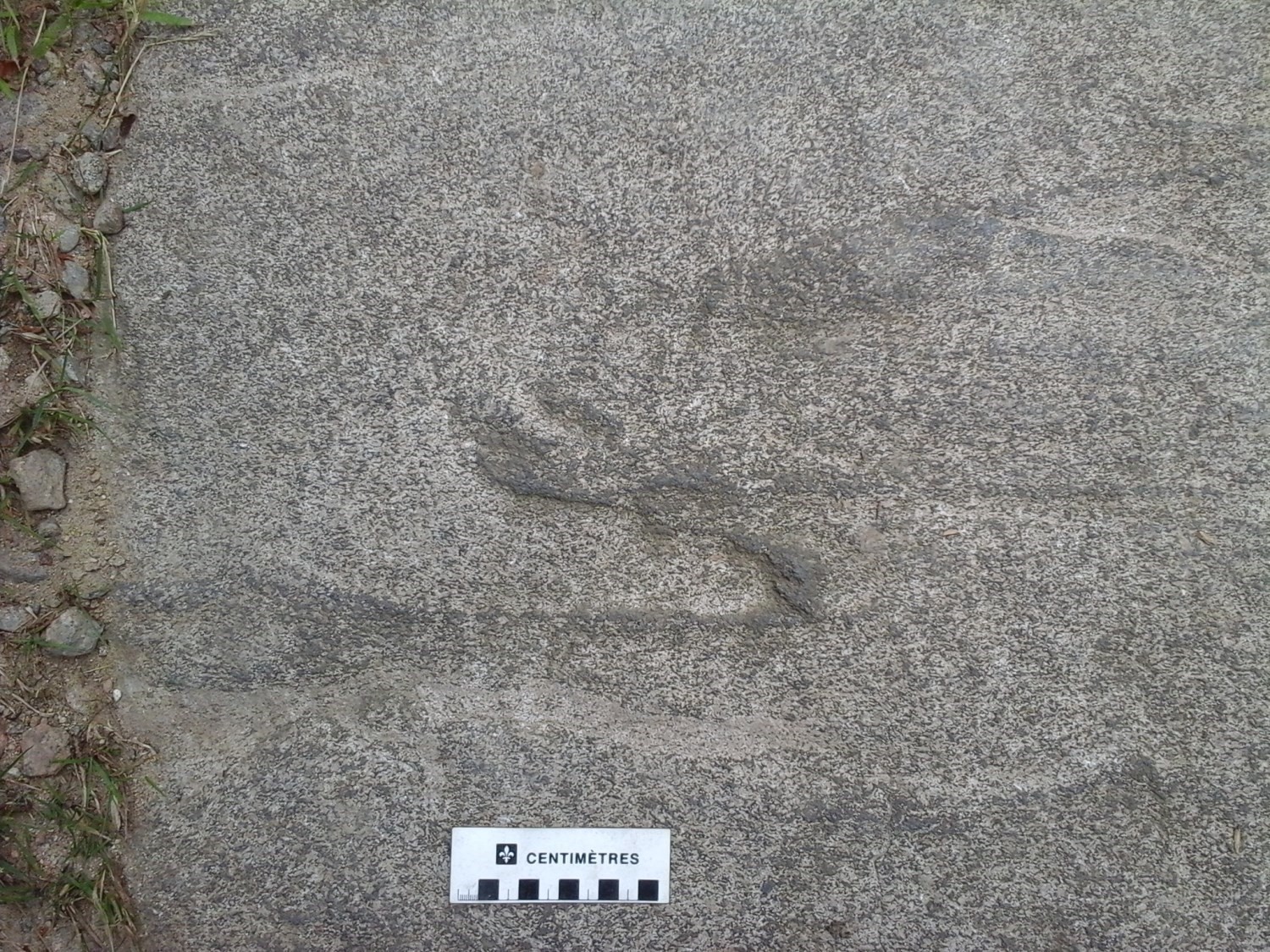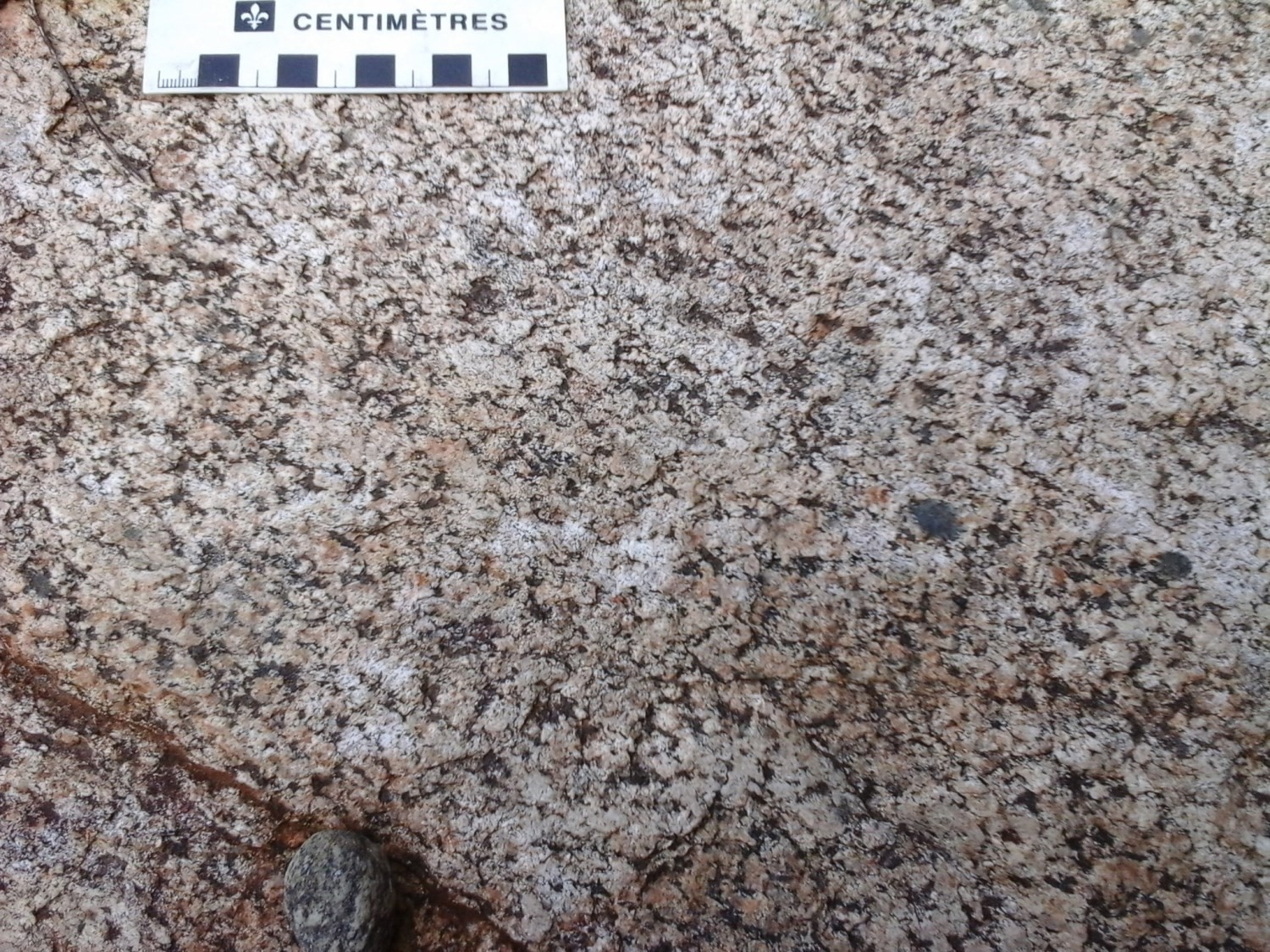
Last modified:
Translation of original French
| Author: | Nadeau et al., 1997 |
| Age: | Mesoproterozoic |
| Reference section: | |
| Type area: | Haut-Saint-Maurice (NTS sheet 31P09) |
| Geological province: | Grenville Province |
| Geological subdivision: | Allochton |
| Lithology: | Mafic-ultramafic rocks |
| Type: | Lithodemic |
| Rank: | Lithodeme |
| Status: | Formal |
| Use: | Active |
None
Background
The Édouard Gabbronorite was introduced by Nadeau et al. in 1997 (MRNF, 2010) when NTS sheet 31P09 (lac Édouard) was mapped. These authors then subdivided it into two units: unit mPedo1 composed of gabbronorite, and unit mPedo2 composed of diabase. Moukhsil and Côté (2018) mapped this intrusion in more detail; they added lithologies to both units and created a third one (mPedo3). This intrusion is well known as the host of Ni-Cu mineralization of the Lac Édouard Mine (69,000 t at 1.55% Ni and 0.5% Cu; Poirier, 1988), which was briefly mined in the 1970s.
Description
From a geochemical perspective, rocks of the Édouard Gabbronorite are ultramafic to felsic with SiO2 contents ranging from 46.13 to 63.33%. They are of gabbroic to syenitic composition and tholeiitic to calc-alkaline affinity.
Édouard Gabbronorite 1 (mPedo1): Pyroxenite, Websterite, Harzburgite, Lamprophyre, Diabase
Unit mPedo1 consists of mafic to ultramafic rocks that predominantly occur as metric to kilometric klippes. The most abundant facies are pyroxenite and websterite, with or without olivine. Nadeau et al. (1997 in MRNF, 2010) only recognized irregular and submetric aphanitic diabase dykes (gabbro), while Sappin (2012) brought to light the presence of norite, websterite and harzburgite in the Lac Édouard Mine area. Moukhsil and Côté (2018) mapped several facies in this unit: pyroxenite (clinopyroxenite and orthopyroxenite), websterite and minor amounts of gabbronorite and lamprophyre.
Pyroxenite is medium grained, foliated to massive and locally contains chalcopyrite and pyrrhotite. Websterite, with or without olivine, is fine to medium grained and with clinopyroxene (pigeonite) associated with brownish to reddish biotite (natural light under the microscope). In the Lac Édouard Mine area, Sappin (2012) observed compositional bedding with alternating harzburgite, websterite and orthopyroxenite horizons. A breccia zone is part of unit mPedo1. This zone consists of pyroxenite containing gabbro enclaves. This pyroxenite is medium grained, foliated and contains clinopyroxene, plagioclase, biotite and pyrite. The latter is finely disseminated in the matrix. Lamprophyre is fine grained and consists of amphibole, biotite, clinopyroxene, calcite and pyrrhotite. The latter occurs as 1 mm clusters and accounts for approximately 3% of the rock.
Édouard Gabbronorite 2 (mPedo2): Gabbronorite, Leuconorite, Mangerite, Gabbro, Diorite
Unit mPedo2 consists of generally massive gabbronorite that locally has foliation and weak magmatic banding. It is medium grained with poikilitic hornblende phenocrystals in places. Hypersthene, more or less uralitized, augite and hornblende make up 35 to 55% of the rock. There are also traces of garnet. Biotite, ilmenite and magnetite are acessory minerals. Plagioclase has subparallel polysynthetic twinning, indicating magmatic texture (ophitic to subophitic). Minor amounts of leuconorite, mangerite, gabbro and diorite are also associated with it. Diorite is fine grained and contains clinopyroxene and amphibole. Locally, small horizons of mPedo1 amphibole pyroxenite are observed in gabbronorite.
Édouard Gabbronorite 3 (mPedo3): Syenite, Charnockite, Monzonite, Syenogranite
Unit mPedo3 consists of medium-grained hypersthene quartz syenite, locally K-feldspar (perthitic) porphyritic and foliated. Large zones of quartz crystals with undulatory extinction are visible. Syenite is also composed of, in smaller quantities, clinopyroxene, plagioclase, amphibole, magnetite and zircon. This unit also contains charnockite and syenogranite. Charnockite is medium to coarse grained and brownish in altered surface. Syenogranite is medium grained and granoblastic. It is composed of quartz, perthitic and sericitized K-feldspar (microcline), plagioclase, magnetite and traces of orthopyroxene and biotite. Locally, the latter replaces pyroxene.
Thickness and Distribution
The Édouard Gabbronorite outcrops only in the south of NTS sheet 31P16 as two elliptical plutons marked by high magnetic susceptibility, the dimensions of which are 10 km by 6 km and 7.8 km by 5 km. Long axes are oriented NW-SE, conformable with regional structural grain.
Dating
A monzonite, dated 1164.7 ±3.6 Ma (David et al., 2010), cuts the Édouard Gabbronorite. This indicates that gabbronorite crystallized before 1164.7 Ma (minimum age).
Stratigraphic Relationship(s)
The two main units (mPedo2 and mPedo3) of the Édouard Gabbronorite intrude into the Montauban Group. Other satellite intrusions (mPedo1) of this gabbronorite form boudins, such as in the Borgia Suite, or intrude into the La Bostonnais Complex.
Paleontology
Does not apply.
References
| Author(s) | Title | Year of Publication | Hyperlink (EXAMINE or Other) |
|---|---|---|---|
| DAVID, J. – MOUKHSIL, A. – GOBEIL, A. – SAPPIN, A.-A. – DION, C. | Datations U-Pb effectuées dans la Province de Grenville en 2007-2008. Ministère de l’Énergie et des Ressources naturelles, Québec; RP 2010-02, 19 pages. | 2010 | RP 2010-02 |
| MOUKHSIL. A. – COTÉ, G. | Géologie de la région du lac Borgia, Province de Grenville, nord de La Tuque, régions de la Mauricie et du Saguenay – Lac-Saint-Jean, Québec, Canada. Ministère de l’Énergie et des Ressources naturelles, Québec. | 2018 | Bulletin géologiQUE |
| MINISTÈRE DES RESSOURCES NATURELLES ET DE LA FAUNE (MRNF) | CARTE(S) GÉOLOGIQUE(S) DU SIGEOM – feuillet 31p. Ministère des Ressources naturelles et de la Faune; CG SIGEOM31P, 16 maps. | 2010 | CG SIGEOM31P |
| POIRIER, G. | Étude métallogénique de gîtes de nickel, cuivre et platinoïdes de l’ouest de la Province de Grenville, Québec. Mémoire de maîtrise, université du Québec à Montréal, Québec, 299 page. | 1988 | – |
| SAPPIN, A.-A. | Pétrologie et métallogénie d’indices de Ni-Cu-EGP du domaine de Portneuf-Mauricie, Québec, Canada. Thèse de doctorat, université Laval, Québec, 618 pages. | 2012 | Source |
| SAPPIN, A.-A., – CONSTANTIN, M. – CLARK, T. – VAN BREEMEN, O. | Géologie des indices de Ni-Cu-EGP des lacs Nadeau et Long, région de Portneuf. Ministère de l’Énergie et des Ressources naturelles, Québec; RP 2004-03, 11 pages. | 2004 | RP 2004-03 |
| SAPPIN, A.-A. – CONSTANTIN, M. – CLARK, T. | Pétrologie et géochimie d’indices de Ni-Cu-EGP dans le domaine de Portneuf-Mauricie. Ministère de l’Énergie et des Ressources naturelles, Québec; RP 2005-03, 12 pages. | 2005 | RP 2005-03 |






